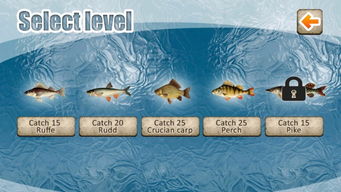Content:
Lure fishing is an exciting and challenging form of angling that has gained immense popularity in recent years. However, for beginners, the art of lure fishing can seem daunting and overwhelming. Fear not! This article will provide you with essential tips and techniques to help you master the basics of lure fishing. So, grab your rod, reel, and tackle box, and let's dive into the world of lure fishing.
Choose the right gear
The first step in learning lure fishing is to invest in the right equipment. Here's a list of essential gear you'll need:
- A spinning rod and reel: Spinning rods and reels are ideal for lure fishing due to their lightweight and sensitive nature.
- Lures: There are various types of lures available, such as crankbaits, spinnerbaits, and jigs. Start with a few basic lures and experiment to find what works best in your fishing environment.
- Line: Monofilament or fluorocarbon line is suitable for lure fishing. The line's thickness should match the weight of your chosen lures.
- Leader: A leader of 6-12 inches in length with a stronger mono or fluorocarbon material will help protect your main line from snags and abrasion.
- Hooks: Ensure you have a variety of hooks in different sizes, depending on the type of fish you're targeting.
Learn the basics of casting
Casting is a fundamental skill in lure fishing. Practice casting in a wide area to get a feel for the technique. Here are some casting tips:
- Hold the rod with a relaxed grip and position it at a 45-degree angle to your body.
- Point the rod tip in the direction you want the lure to travel.
- Use your wrist and arm to flick the rod forward, allowing the lure to follow the line.
- Adjust your casting technique based on the wind and water conditions.
Master lure retrieval techniques
Lure retrieval is crucial in triggering fish to bite. Here are some common retrieval techniques:
- Jerk and pause: Move the lure in short, sharp bursts followed by pauses to mimic a struggling prey.
- Trolling: Retrieve the lure at a steady pace, mimicking the natural movement of prey.
- Swing and retrieve: Cast the lure out and allow it to swing back to you, then retrieve it with short, sharp movements.
Understand fish behavior
To be successful in lure fishing, it's essential to understand the behavior of the fish you're targeting. Research the species you're interested in, and learn about their feeding habits, preferred habitats, and seasonal patterns.
Develop a keen sense of observation
Being observant is key to success in lure fishing. Pay attention to the water's surface, as fish often strike when they see something unusual. Additionally, watch for fish rises, boils, or other signs of activity.
Patience is a virtue
Lure fishing can be unpredictable, and you may go for long periods without a bite. Stay patient and keep experimenting with different lures and techniques until you find what works.

Practice, practice, practice
Like any skill, lure fishing takes time and practice to master. Spend time on the water, experimenting with different techniques and lures. The more you practice, the better you'll become.
In conclusion, learning the art of lure fishing may seem challenging at first, but with the right gear, techniques, and patience, you'll soon be reeling in fish with ease. Remember to enjoy the process and take pride in your progress. Happy fishing!












